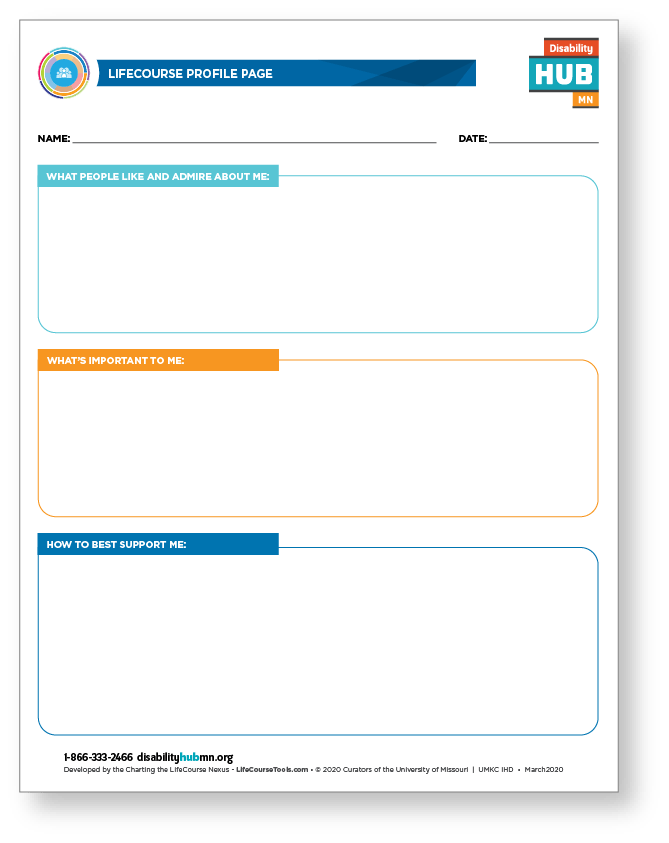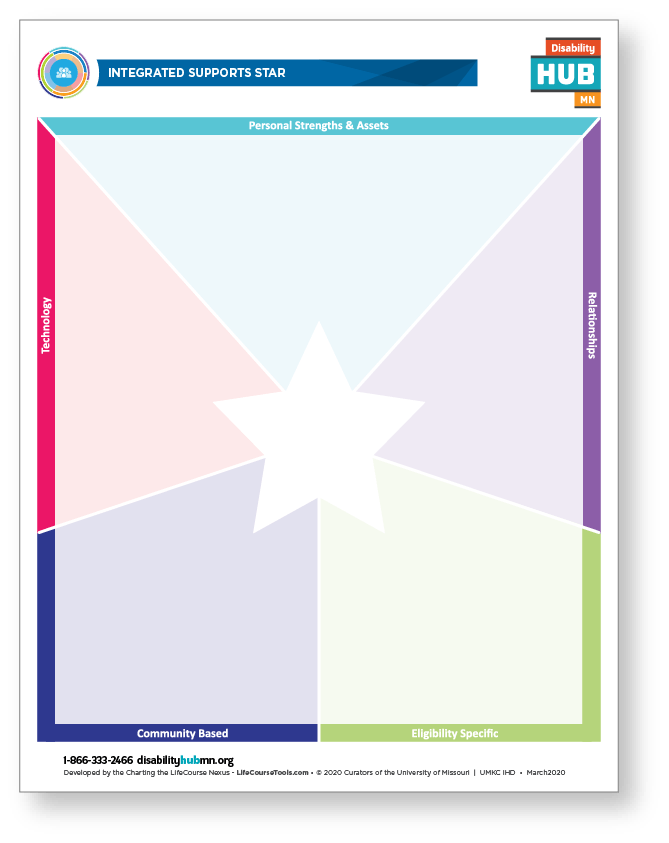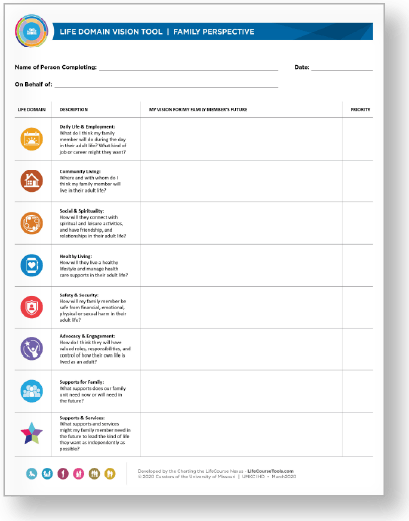Use Charting the LifeCourse tools to activate families and gather their perspectives.
The Charting the LifeCourse tools help families think about their child's life and become partners in the transition process. Take time to discover a family's thoughts about their child, their vision for their child's life, and the resources and supports they believe their child needs.
For more information about introducing the Charting the LifeCourse framework to families, see Charting the LifeCourse framework in the Educate families section of this toolkit.






